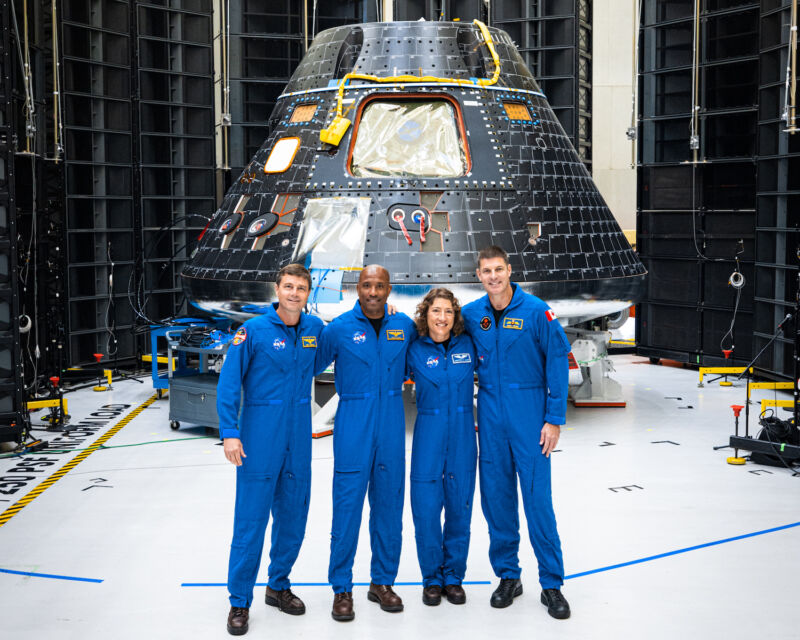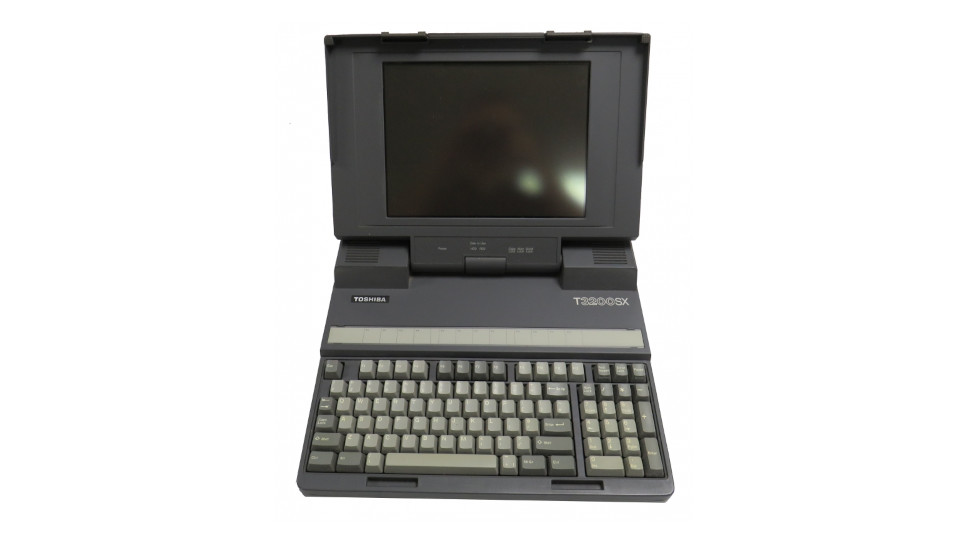
Enlarge / Artemis II commander Reid Wiseman, pilot Victor Glover, and mission specialists Christina Koch and Jeremy Hansen pose with their Orion spacecraft at NASA’s Kennedy Space Center in Florida.
Trevor Mahlmann
The three Americans and one Canadian slated to fly on NASA’s Artemis II circumlunar mission had a “pinch me” moment Monday when they got their first chance to visit the Orion spacecraft that will carry them around the Moon and back to Earth.
The astronauts had an opportunity to peer through the hatch of the Orion crew capsule for the Artemis II mission, now largely complete and going through some final tests before it is connected to its power and propulsion module at NASA’s Kennedy Space Center in Florida.
“We all said when we walked up to it the first time, that it gave us chills, and it really does,” said Christina Koch, a mission specialist on the Artemis II mission. “So it’s a new way that I feel bonded with this crew and also with the team.”
This week’s crew visit to Kennedy Space Center is far from their last as the astronauts ready for their mission—the first flight by humans to the vicinity of the Moon since the last Apollo mission in 1972. On future trips to the Florida spaceport, Koch and her crewmates will climb inside the Orion crew module multiple times for testing and checkouts. Sometime next year, they’ll put on their orange pressure suits and strap into their seats for a full-up end-to-end test of the spacecraft’s software, cockpit displays, and life support system.
“It was great to look inside,” said Reid Wiseman, the Artemis II commander. “The fit and finish is gorgeous. It’s neat to see the actual hardware all coming together. The things that we’ve learned about so far in training, to see it for real in the spacecraft, it just gave you a good sense of how far along this thing is. The hardware is nearly ready.”
Far along, but more work to do
Right now, the 16.5-foot-diameter (5-meter) Orion crew module—nearly 4 feet wider than the Apollo command module from the first era of lunar exploration—is situated at one end of the long hall of the cavernous Neil Armstrong Operations & Checkout Building at Kennedy. A stack of powerful speakers surrounds the Orion capsule on three sides.
The upper part of the gumdrop-shaped spacecraft is covered in black silica tiles similar in appearance to the thermal protection tiles that flew on NASA’s space shuttle. On the bottom, the spacecraft’s main heat shield is attached, with a reflective silver coating applied over an ablative material that will take the brunt of the nearly 5,000° Fahrenheit (2,800° Celsius) heat generated at the end of the mission when the capsule plunges back through Earth’s atmosphere at a speed equivalent to 32 times the speed of sound.
Later this week, the speakers will start blasting the Orion crew module with sounds that mimic the acoustic energy from a rocket launch. The direct field acoustic test is designed to ensure the spacecraft can weather the intense sound from the engines and boosters of NASA’s Space Launch System rocket, which will send the Artemis II crew into space.
It’s one of the last big tests before technicians raise the Orion crew module, built by Lockheed Martin, on top of the Orion service module, made by Airbus through an agreement between NASA and the European Space Agency. The finishing touches on the Orion crew module have taken longer than expected, and the connection of the two Orion modules is now expected in mid-September, two- to three-months later than NASA forecast earlier this year.
Preparing the crew module element of the Artemis II mission—where the astronauts will live during their roughly 10-day-loop flight around the far side of the Moon—is now driving the launch date, according to Jim Free, who leads the NASA division responsible for developing hardware for the Artemis lunar program.
The preparations are running a “number of weeks” behind the schedule NASA needs to maintain the target Artemis II launch date in late November 2024, Free said. Not surprisingly, that means a delay into 2025 is likely.
“The crew module is the critical path right now,” Free said in a press conference Tuesday at Kennedy. “We have to get the crew module assembled and tested, and then mated to the service module, and turn it over to the ground systems folks here for processing.”
Note: This article have been indexed to our site. We do not claim legitimacy, ownership or copyright of any of the content above. To see the article at original source Click Here













